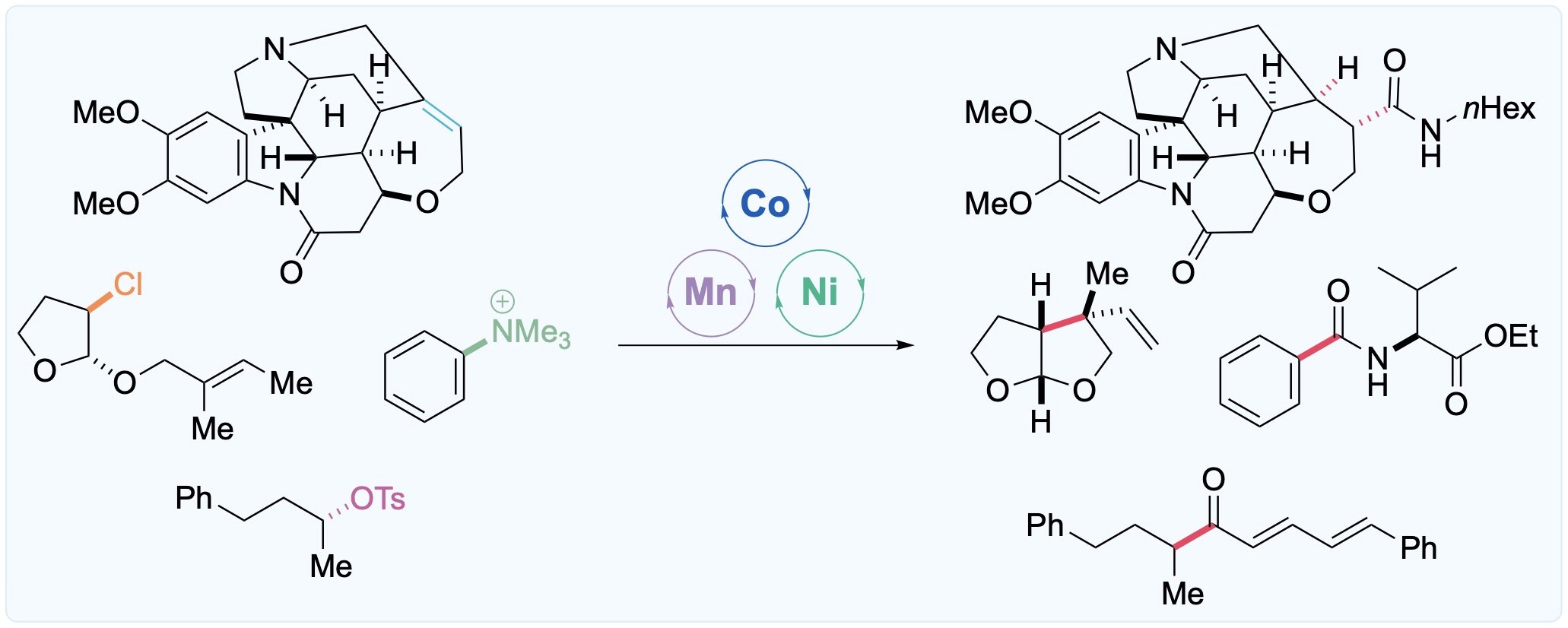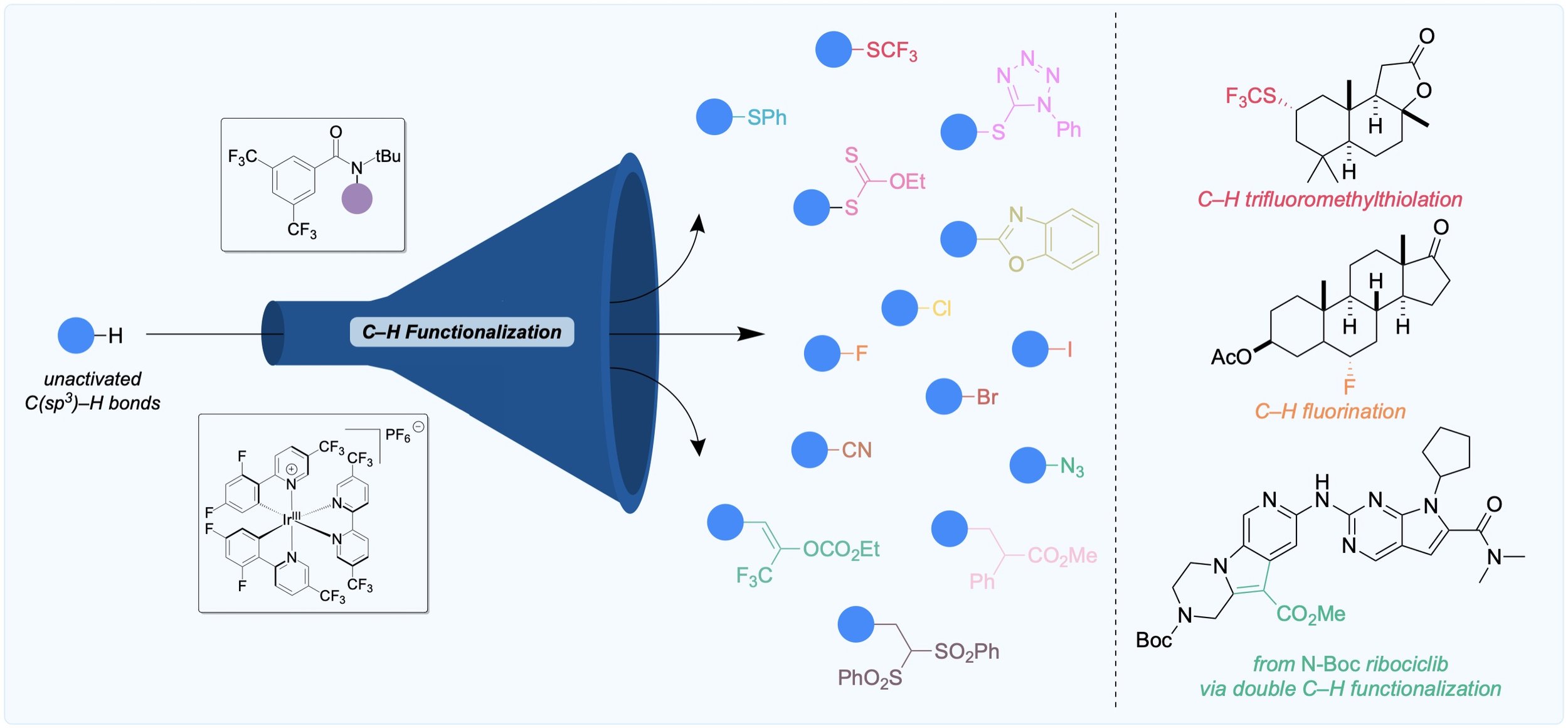Current Research
-

Radical-Mediated C–H Functionalization
-

Polymer C–H Functionalization
-

Earth-Abundant Metal Catalysis
Radical-Mediated C–H Functionalization
The direct transformation of a C–H bond to useful functionality streamlines organic synthesis and enables the late-stage functionalization of biologically relevant molecules. We use tuned heteroatom-centered radicals and proton coupled electron transfer (PCET) to accomplish high-value C–H functionalizations with a focus on developing new site-selectivity and functional group compatibility.
Representative Publications:
“General Synthesis of N-Alkylindoles from N,N-Dialkylanilines via [4 + 1] Annulative Double C–H Functionalization”; J. Am. Chem. Soc. 2023, 145, 49, 26540–26544
“Heteroarylation of unactivated C–H bonds suitable for late-stage functionalization”; Chem. Sci. 2022, 13, 11878-11882
“Diversification of aliphatic C–H bonds in small molecules and polyolefins through radical chain transfer”; Science 2022, 375, 545-550.
Polymer C–H Functionalization
In addition to our studies in small molecule C–H functionalization, we also leverage our methods for the late-stage modification of commodity polymers. These transformations can achieve substantial modulation of the polymer’s initial material properties, increasing material value and enabling the upcycling of post-consumer plastic waste.
Representative Publications:
“C–H Functionalization of Polyolefins to Access Reprocessable Polyolefin Thermosets”; J. Am. Chem. Soc. 2023, 145, 50, 27450–27458
“Diversification of aliphatic C–H bonds in small molecules and polyolefins through radical chain transfer”; Science 2022, 375, 545-550.
”Chemo- and Regioselective Functionalization of Isotactic Polypropylene: A Mechanistic and Structure-Property Study”; J. Am. Chem. Soc. 2019, 141, 12815-12823.
Earth-Abundant Metal Catalysis
Transition metal catalysis has proven invaluable in forming the C–C bonds which comprise the framework of complex small molecules. We seek to discover modes of reactivity in organometallic catalysis that unlock C–C bond formations using readily-available chemical building blocks. In this effort, we favor the use of earth-abundant metals such as cobalt, manganese, and nickel as catalysts to maximize the sustainability of these processes.
Representative Publications:
“Cobalt-Catalyzed Synthesis of Amides from Alkenes and Amines Promoted by Light”; Science 2024, 383, 77-81
“Cobalt-Catalyzed Deaminative Amino- and Alkoxycarbonylation of Aryl Trialkylammonium Salts Promoted by Visible Light”; Angew. Chem. Int. Ed. 2022, 61, e202210772
“Stereospecific Nickel-Catalyzed Reductive Cross-Coupling of Alkyl Tosylate and Allyl Alcohol Electrophiles”; Org. Lett. 2021, 23, 7215-7219.


